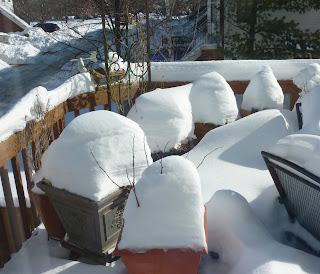
If you've read any of my posts in the past, you know that I've had to learn the hard way about planting too early in the season. I try to resist all temptation until Mother's Day, lest an unexpected overnight cold snap arrive, threatening the lives of my newly planted friends and leaving me crying in my empty wallet.
And so I satisfy myself in the meantime with planning. I've studied and worked in the financial field for many years and so I have a penchant for spreadsheets--as you see in this picture. Not only does it help me monitor my gardening expenses, but it also reminds me of what I've bought every year, where I got it, when I bought it, and when it was delivered. I can also see how prices of certain plants change from year to year. And while the price of Xanthosoma "Lime Ginger" seems to creep up annually, still I buy--because I love it. But one day, I may have to put a ceiling on what I'm willing to spend on that particular plant. Number nerd that I am, I find keeping a gardening spreadsheet helpful and fun.
So stay tuned, now that I have a plan in place and a shopping list together, I'll be ready to hit the nursery on Mother's Day weekend. Rain or shine.































